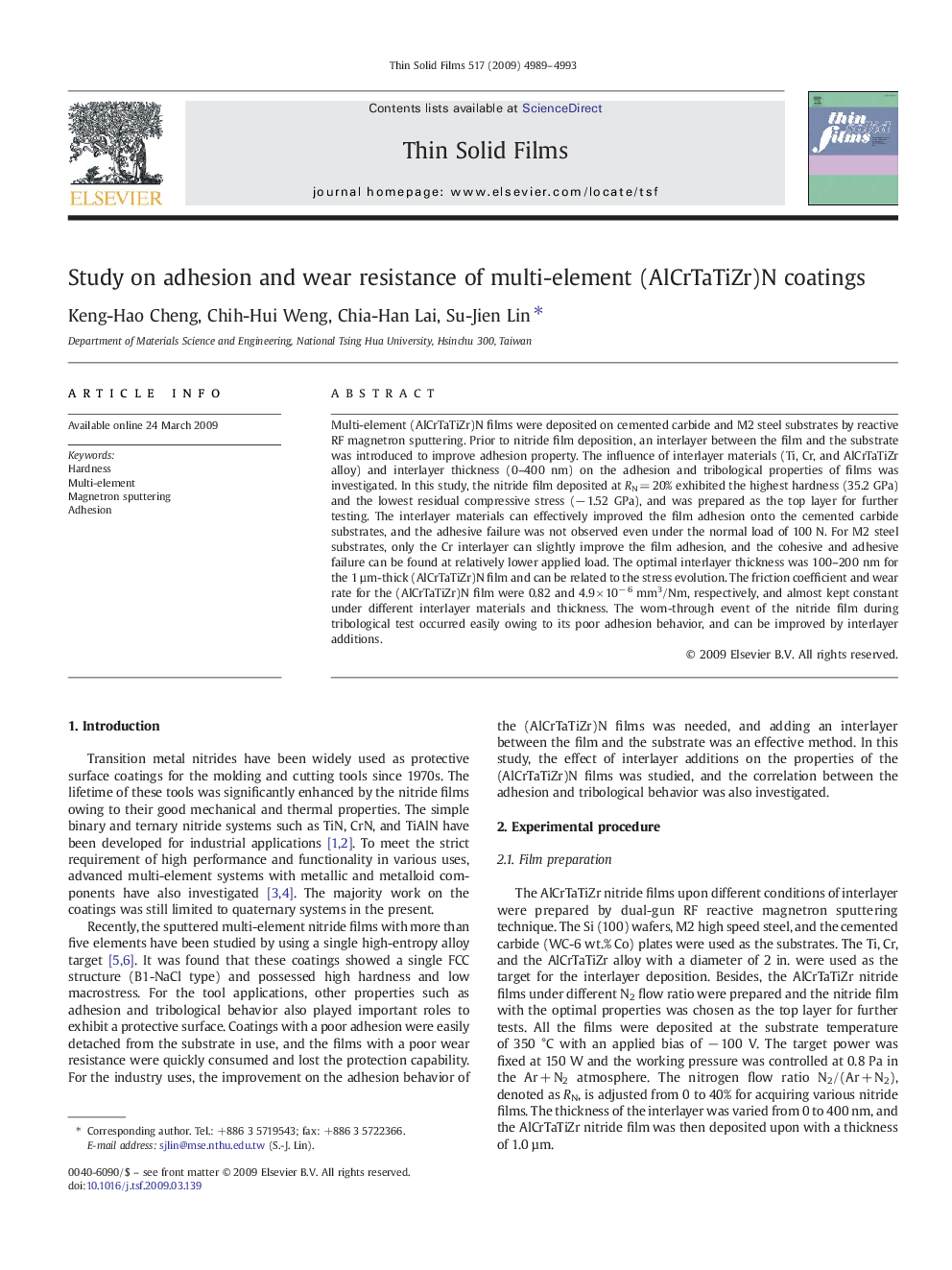| Article ID | Journal | Published Year | Pages | File Type |
|---|---|---|---|---|
| 1673221 | Thin Solid Films | 2009 | 5 Pages |
Multi-element (AlCrTaTiZr)N films were deposited on cemented carbide and M2 steel substrates by reactive RF magnetron sputtering. Prior to nitride film deposition, an interlayer between the film and the substrate was introduced to improve adhesion property. The influence of interlayer materials (Ti, Cr, and AlCrTaTiZr alloy) and interlayer thickness (0–400 nm) on the adhesion and tribological properties of films was investigated. In this study, the nitride film deposited at RN = 20% exhibited the highest hardness (35.2 GPa) and the lowest residual compressive stress (− 1.52 GPa), and was prepared as the top layer for further testing. The interlayer materials can effectively improved the film adhesion onto the cemented carbide substrates, and the adhesive failure was not observed even under the normal load of 100 N. For M2 steel substrates, only the Cr interlayer can slightly improve the film adhesion, and the cohesive and adhesive failure can be found at relatively lower applied load. The optimal interlayer thickness was 100–200 nm for the 1 µm-thick (AlCrTaTiZr)N film and can be related to the stress evolution. The friction coefficient and wear rate for the (AlCrTaTiZr)N film were 0.82 and 4.9 × 10− 6 mm3/Nm, respectively, and almost kept constant under different interlayer materials and thickness. The worn-through event of the nitride film during tribological test occurred easily owing to its poor adhesion behavior, and can be improved by interlayer additions.
